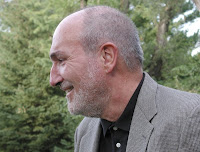WARCH CAMPUS CENTER CINEMA
SCREENINGS & LECTURES:
7:00 J. Shimon & J. Lindemann, facilitators: Introduction to Program
7:10 Ian Wallace - Love is Madness: Performance, presentation and product affair about the pangs of passion produced by MAD Design.
7:20 Yexue Li - Occident & Orient: An artist talk on her recent photographs about Chinese identities embracing, rejecting then merging with the West.
7:30 Zenabu Abubakari + Lindsey Ahlen - The Missing Link: A critique of Western media portrayals and the perceptions and misconceptions of Africa and America (9 min. video).
7:40 Natasha Pugh - China Here/China Now: The sociopolitical landscape of contemporary China explored and exposed to enlighten viewers (7:30 min. video).
7:50 Marvanna Avery-Cash - Trapped Between 2 Paradigms: A compelling journey within the world while one overcomes a battle against themselves and the urban environment, in order to enjoy a peaceful and refreshing adventure (8 min. video).
8:00 Jordan Severson - Raw Shock: A Study of Cultural Conformity: A personal investigation of the effects associated with the phenomenon of reverse culture shock and the experiences of returning home after extended period of time (6:09 min., video).
8:10 Molly Preston - Wondering Aimlessly: A stroll through your brain while you're dreaming (6 min. video).
8:20 Fariha Ali - PoMoNow Magazine Launch: A release event for a new glossy magazine for the existentially overwhelmed featuring video profiles (6 min. video).
WARCH CAMPUS CENTER ESCH STUDIO
PERFORMANCES:
PERFORMANCES:
8:50 Wilmer Chan - trans: Back and forth. Black and White. What do I seek? What, Should I seek? (6 min. performance with video).
9:00 Lawton Hall - Drift (a Field): Live video and sound for exploring noise, snowblindness, indeterminacy in nonlinear narrative structures, and the color white (~7 min., live electronic performance).
9:10 Liam O’Brien - Duet: Performance piece for two humans dining with projection (4 min. performance).
RECEPTION FOR ARTISTS


















